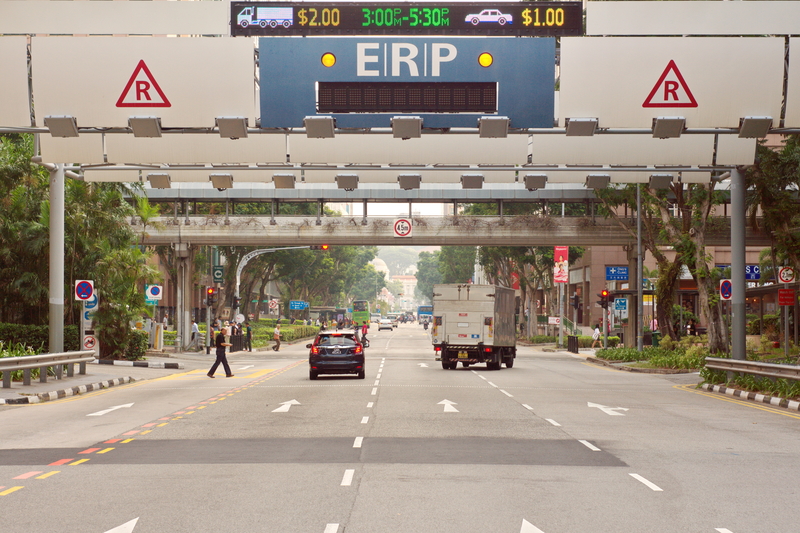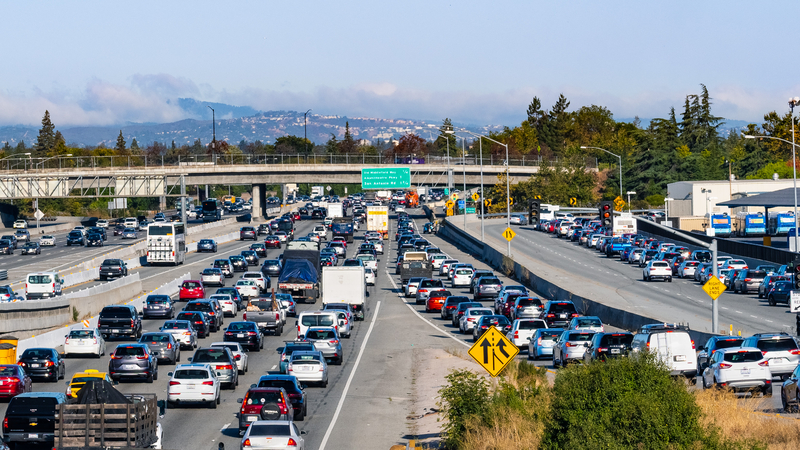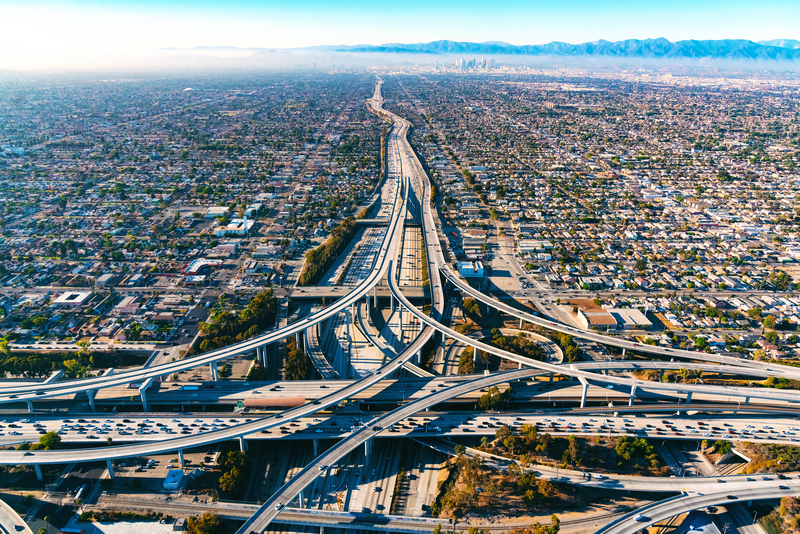
So why discuss alternative ways of road user charging (RUC)? Is it to decarbonise? Is it to try to use the current infrastructure more efficiently? Is it to be more ecologically aware? To promote behavioural change? To provide a safer infrastructure to manage the strategic road network (SRN) and the major road network (MRN)? Is it simply to generate revenue? Perhaps we want to be fairer and more equitable, particularly as more battery-powered electric vehicles (BEVs) are using our roads that don’t currently pay road tax or fuel duty? To me, it must be a combination of all of the above.
The government thinks the public are against such schemes. But when asked, public perception is that change is necessary, and that the government is being too slow to implement some of these measures for political reasons.
This article aims to address three core questions:
1. Are the RUC schemes that are being promoted equitable and fair?
2. Why should RUC replace the current fuel and road tax duty?
3. Does the technology exist to provide a fairer and more equitable approach to charging for road use?
With the exception of the pandemic years, traffic and congestion on our road network has continued to rise year-on-year since the end of World War II. The cost of road infrastructure and its maintenance has also been steadily increasing. There is now an understanding, a realisation, and growing acceptance that it would be virtually impossible to build sufficient infrastructure to continue to meet future demand. This requires a deep dive into the perceptions and requirements placed on our road network and how their use can be better managed.
For decades, fuel duty and vehicle licence duty have been the two main mechanisms to charge for car use and ownership respectively. Why change? Surely the current vehicle taxes and fuel duty is sufficient, equitable and fair? Well, not really. After scouring many official and government reports I was able to deduce that around 13% of vehicles account for about 54% of all vehicle miles travelled.
“13% of vehicles account for around 54% of all vehicle miles travelled”
This figure may not be absolutely accurate, but it does indicate that a small proportion of us account for the greatest amount of wear and tear on our nation’s roads. We must also consider that zero-emission vehicles currently do not pay vehicle tax nor fuel duty and weigh on average about 30% more than their internal combustion engine siblings.
For EVs, we need to consider the carbon required to generate the electricity to power them, and the additional tyre and brake particulates that heavier EVs emit, which are now believed to be equally as damaging to our environment. In parallel, more efficient engines has meant less duty paid for more vehicle miles travelled, leaving successive chancellors of the exchequer out of pocket.
If the current vehicle tax and fuel duty system isn’t fair and equitable, what is? The main contenders are:
Tolling Systems
Road tolls are not new and have been in place in the UK since the 17th century, where parishes set up levies on road users to pay for road and bridge administration and maintenance. Over the years this has developed into electronic road tolling (ERT) systems requiring electronic payments, where a vehicle is no longer required to stop.
While this could be deemed equitable and fair, depending on your perspective, it doesn’t take emissions into account. It can also lead to additional vehicle miles travelled when drivers take more circuitous routes to avoid the toll charge. It also only provides funding for that specific piece of road, not necessarily the rest of the road network.
These systems are common around the world, but do require gantries, cameras, radio frequency identification readers (RFID) and ANPR software to collect vehicle and driver information to charge the driver from a pre-existing account. All of which are expensive to implement, manage and maintain.
Distance-based payment systems While electronic road tolling systems can be distance-based, and charge a variable price based on where one gets on and off the road network, they still only charge for a specific segment of a road, and in some cases can be avoided by those electing to take a more circuitous route. In New Zealand, for example, drivers are charged based on the vehicle they are driving for every 1,000km travelled, verified at the time of their annual MOT (or equivalent).
Even trailers incur a charge depending on the number of axles and maximum permitted weight. The cost for your 1,000km is also heavily dependent on where you live and your reliance upon a car. For example, in London with its fully-integrated public transport network and with little reason to own a car, should a person be expected to pay the same as someone living in rural Scotland, where the private car is the only option to travel to work, get groceries, take the children to school or even visit the not-so-local GP? That said, this does seem at first to be a fairer and equitable approach which is easy to understand and implement.
Threshold payment systems or congestion charging
The first congestion charging scheme was implemented in Singapore in 1994, then Durham, UK, in 2002, closely followed by the far greater and much more involved London Congestion Charging Scheme which went live in February 2003. Since then, we have introduced workplace parking levies (WPL), clean air zones and ultra clean air zones, all of which use the same basic technologies to reduce traffic along a specific corridor or region.
The most evolved congestion charging scheme is in Singapore, where charges are variable - based on the time of day, levels of congestion and vehicle type. Yet I would ask: is it really fair? For example, to charge one person the same amount to drive one mile into London as someone else who enters in the morning, drives all day, clocks-up 172 miles and then departs at night? Probably not.
“Does the technology exist to implement a fair and equitable solution?”
At this point we must clarify the distinction between localised threshold payment systems - such as localised congestion charging, low-emission zone (LEZ), ultra-low emission zone (ULEZ), workplace parking levy (WPL) - and the general use of the SRN, the MRN and the local road network.
While threshold payment solutions have been in existence for decades, the threshold is based around the introduction of a cordon of cameras to identify when a vehicle crosses a threshold. As the threshold size increases, more and more vehicles could potentially travel within the zone without going through a camera check and therefore without being captured.
This is overcome by introducing roving camera platforms within the zone to capture vehicles that haven’t crossed any part of the camera cordon, but which still need to pay for the privilege of driving within the zone. As the region increases in size, it either requires additional camera-cordoned zones or an exponential increase in roving camera platforms, both of which are expensive, and neither of which provide long-term viability. So, the challenge is how to develop a system that can be expanded to incorporate a country-wide deployment which is equitable, fair, maintainable and affordable.
Mechanisms for variable-priced models
What should a national road user charging scheme address? The best example is in New Zealand, it is simple to implement, doesn’t necessarily need a great deal of technology and takes into account the area where a person lives as well as the vehicle type. But what the New Zealand model doesn’t seem to take into account is the availability of modal alternatives for the journey, the roads that are being used by the driver, the time of day of the trip, or air quality.
If we want to be more environmentally conscious and equitable, we need to provide a mechanism for variable-priced models that can take account of availability of modal alternatives, traffic requirements, congestion, air quality, and an easily understood pricing model which can gradually start to change travel habits and trends of non-urgent vehicle use. But, variable pricing does become exponentially more complex, and more difficult to understand.
The questions that remain are, does the technology exist to implement a fair and equitable solution in the UK, and what would such a system look like if we were to start to plan for it?
Through vehicle tracking technology, which is simple to implement, identifying which roads a particular vehicle was using is for some conceived as an invasion of privacy - particularly if the date and time are captured. But in reality, is this so different from how open-loop payments are undertaken on public transport? Doesn’t Transport for London (TfL) get the same information about a customer’s movements when they use the tap-on tap-off system in London? TfL already has the ability to identify that a person entered the gate at a particular station and exited at another. The difference is that this information would be specific to a vehicle, person or account. However, it isn’t dissimilar to the data we regularly provide to insurance companies - or even provide each time we use mapping apps.
In my view the best approach would be to start simple, through implementing something similar to the New Zealand charging model. This would be based on a yearly declaration of milage or odometer check and the car owner’s access to alternative modes of transport at the location the vehicle resides. We can then gradually introduce variable pricing options to improve the equitability and environmental credentials of the scheme as public perception improves. Variable priced options could then apply to the SRN, MRN and even when entering or leaving a large city such as London, Birmingham and Manchester. At the same time a change management campaign can be undertaken to help explain why it is necessary.
Some options are more equitable than others
The charging model could later be expanded to accommodate variable-priced options, that could be integrated with air quality monitors, reduced speeds - and at the same time charging more based on poor air quality. This would need to be integrated with existing ANPR technologies or ERT transponder-based technologies to indicate variable speed thresholds and which vehicles have entered into those zones.
Tracking the number of miles undertaken and the routes used would require some form of road use tracing. An option could be a variable-priced approach, tracked via a GPS-enabled in-vehicle app which is already used by the driver. The app would carefully and accurately log the number of miles driven on the SRN, MRN or local threshold charging model, and be charged for actual vehicle miles travelled. If drivers don’t wish to sign up to this GPS approach, an alternative could be for drivers to pay a fixed fee per day, set according to vehicle type.
There are options available, some fairer and more equitable than others. Variable-priced solutions will require more infrastructure and the ability to identify where the vehicle is travelling to and from. My recommendation is that the current fuel duty and tax system is neither fair nor equitable and does not provide effective incentives for ecological and environmentally sustainable travel, even after conventional road fund licence is applied to BEVs in 2025.
To promote the wellbeing of our planet it is essential that we start simple and then implement variable-priced options as and when it is sensible to do so. This requires very little additional infrastructure and builds upon a tried and tested approach.
Are we being overly cautious in our approach to trying to reduce vehicle miles travelled with an intent of reducing traffic and congestion while improving air quality? Get in touch and offer your perspective…jpedersen@systra.com
ABOUT THE AUTHOR:
Jorgen Petersen is Systra’s director of new technology 












